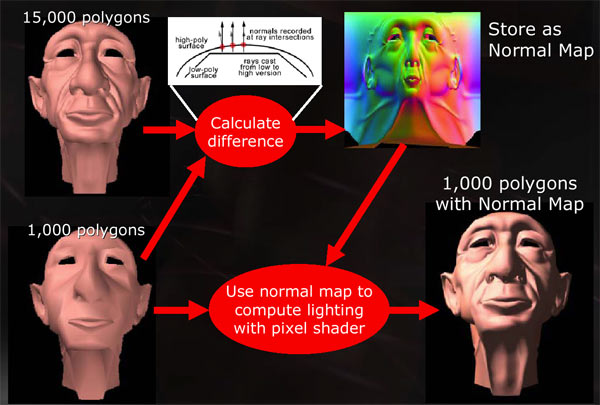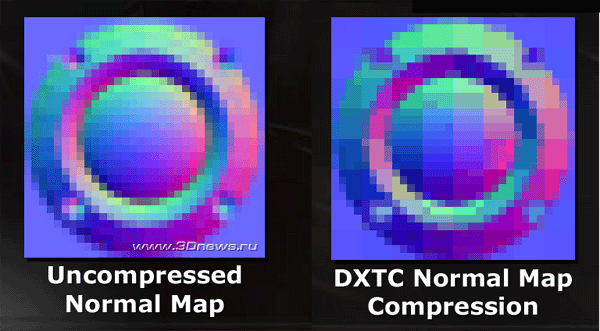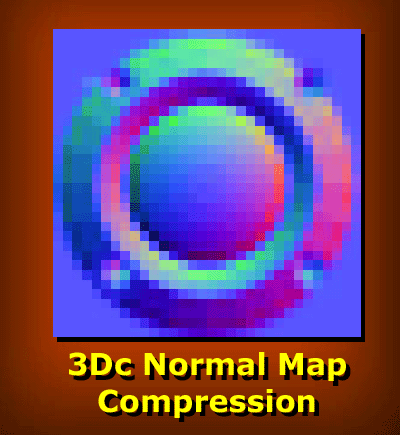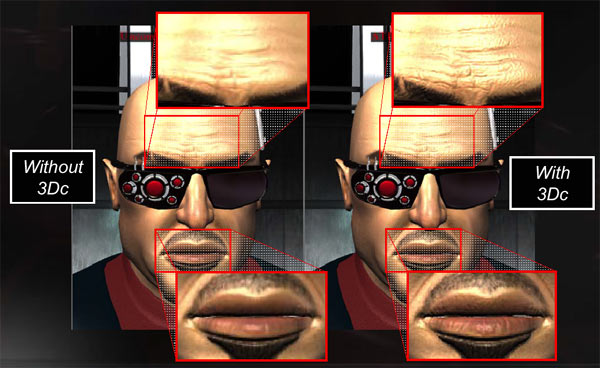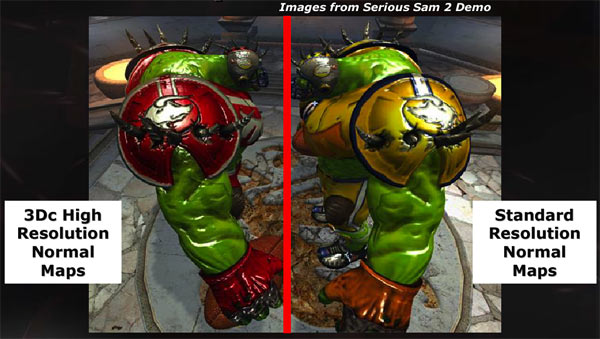ATI Radeon X800 XT (R420): Extreme force
Technologies. Demo "Ruby: The DoubleCross"
Since the time the first 3DFX card was released, the video industry established a good tradition - to prepare a good techno demo by the time the new chip is launched thus demonstrating new graphic horizons, because it sometimes takes too long wafting for the implementation of new technologies into real gaming products.
The most successful demos turn into worship symbols of products, if you remember the "butterfly" by NVIDIA. It's high time that butterfly was included in all marketing textbooks as a fantastic example of purely image-making work in promoting a high-tech product.
With the release of "Dusk", the conceptual approach to techno demos has seriously changed, and now their major and only goal is ADVERTIZING, with the demonstration of new chip functionalities as secondary. Nowadays "demos" are used as TV commercials aimed at taking by surprise, smashing and fixing the eyesight. Enhanced by the Internet facilities, the advertizing persuades the target audience to download presentation demo reels first and then the executive file (if the manufacturer makes them available for download).
 "Agent RUBY is authorized in use of extreme force and has global diplomatic immunity"
"Agent RUBY is authorized in use of extreme force and has global diplomatic immunity"
The most extreme weapon of Ruby :-)
Those inveterate techno geeks from ATI at last understood that. This time, to present X800 cards to the public ATI avoided showing ogres and other evil spirits, and used the pretty "Ruby" girl on a top-secret mission as an attraction, but this time fully dressed! Have you ever seen dressed lady spies??? I haven't.
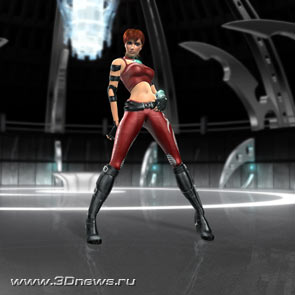 |
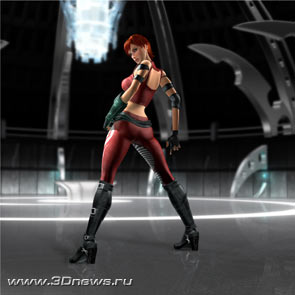 |
|
*2400x2400; 450 kb
|
*2400x2400; 440 kb
|
Demo "Ruby: The DoubleCross" was created jointly by ATI and "RhinoFX". RhinoFX is not the last player on the 3D animation market and receives orders from clients like General Motors, Sony, Motorola, BMW, Procter & Gamble, Ford etc...
In our case, the guys from RhinoFX together with ATI underwent an technological training and mastered all the new functionalities of X800 3D accelerators. In particular, the demo makes active use of complex shader generation commands (up to 512 instructions) as well as the new normal map compression dubbed 3Dc.
3Dc Technology
Today's 3D images in games are still made of primitive triangles on top of which 2D textures are fitted. The more triangles, the more precise the shape and volume of an object is. But it is too prodigal to compute millions of coordinates for creating a 3D object precisely. A simple and effective way was found - the normal map. The technique allows applying a special texture responsible for correct lighting of an object made up of a limited number of elements thus attaining correct display of the surface volume.
The normal maps are already used quite intensely in the most recently released games (e.g. Far Cry and Lord of the Ring), as well as those to come soon, like Half Life 2, Doom 3 and Serious Sam 2.
The "normals" are like an arrow that points to the right perpendicular direction from a complex surface at any of its point. This data is required to compute how the light is to be reflected from the surface point, and normal maps appear to be ordinary textures where all the necessary information is digitally stored.
Perhaps no one grasped the idea, so let me put in in simpler terms:
- Both complex and simple models of an object are created.
- Based on them, the difference in directions of surface perpendiculars is calculated
- The produced data is used to create a "normal map" texture
- Information from that texture allows computing the illumination of simple object as if the game uses the originally complex (correct) object.
To illustrate it, let's use the following picture taken from ATI's presentation:
Like any texture, the normal map has its limitations for the amount of presented information. To reduce the volume of textures, the DXTC compression technique is used:
As we see, the final result is far away from the original after the existing compression techniques have been applied. ATI offers developers a new tool for improving the quality of normal map compression, the 3Dc technology implemented at the hardware level in R420 chip.
We are not going deep into the mathematical model of the process - experts can get a detailed view from the technical documentation available to download at ATI's website. Note only the result of introduction - 1:4 compression (one-to-four) while preserving the identity to the original, which results in saved memory bandwidth and improved realism in displaying 3D models.
We have repeatedly observed some bravura announcements and quiet funerals of proprietary initiatives - just remember the TrueForm (ATI). Hopefully, this time the developers will make use of the technology because it is absolutely simple in implementation. In virtually two hours, Croteam added support for the 3Dc into their "Serious Sam 2" demo version, which is possible provided there are detailed models.
To date, the 3Dc technology has been announced in such awaited and worship projects like Serious Sam 2, Half Life 2, Pirates! by Syd Meyer, Tribes Vengeance and Dark Sector.
Pixel Shader 3.0: to be or not to be?
In the competitive NV40, support for the next version of pixel shaders has been implemented. R420 lacks this technology. That is, in the nearest future we are in for a fierce marketing war - NVIDIA will be persuading all in the extreme necessity for version 3.0 pixel shaders already in today's hardware, and ATI will earnestly object to that substantiating its viewpoint by the fact that even today's version 2.0 shaders have been implemented in all their glory in the only game - "Far Cry". But how well done they are! Before the protracted projects like "DOOM3" and "Half-Life2" are released, the project of little known Crytek has already turned into a smashing hit.
I must admit, game developers are working at a serious time lag before new technologies are introduced into their projects. There are objective reasons for that - the time taken for creating a game may last as long as 3-5 years while generations of graphic chips change once every 9 months. Recall that version 2.0 shaders were first demonstrated in the revolutionary R300 core (Radeon 9700) which was released 20 months ago. And only now we can somehow feast our eyes looking at them.
Coming back to Pixel Shader 3.0, it is worth mentioning two-three fine points:
- The version 3.0 pixel shader technology will be supported in the next version of API Microsoft DX (DirectX9c), which will be in about early June;
- As many game developers say, version 2.0 shaders won't be able to make games look better. There aren't effects that can be done with version 3.0 shaders which can't be implemented with version 2.0 shaders.
- It's a big question whether it is possible to boost performance upon switching to version 3.0 shaders. They differ from the previous versions mainly by the complete support for conditional branchings. The problem is the branching result is very hard to predict, and if the prediction is mistaken, all the GPU pipeline has to be re-started with substantial loss in performance.
- The first game where it will be supported is most likely "DOOM3";
- Ideologically, much depends on the well-known Futuremark, and more precisely on whether the "Pixel Shader 3.0" benchmark will be integrated in 3DMark2004. If yes, then it will be possible to measure the effectiveness of implementing the technology in NV40 (it is unlikely to be high or even acceptable). If not, ATI will acquire one more argument in favor of the premature nature of this technology.
So little time is left before 3DMark2004 is released. Let's wait and see.
Next 
 |
Content: |
 |
|
- ATI R420 Graphic Chip
- ATI Radeon X800 XT Video Card Features
- GDDR3 Memory
- Technologies. Demo "Ruby"
- "Cheating" and "optimizations
- Tests: synthetic benchmarks
- Tests: gaming applications
- R420 vs NV40: first glance
-
Final Words
 |
Top Stories: |
 |
 |
 |
MoBo:


|
 |
 |
 |
VGA Card:


|
 |
 |
 |
CPU & Memory:

|
|
|


